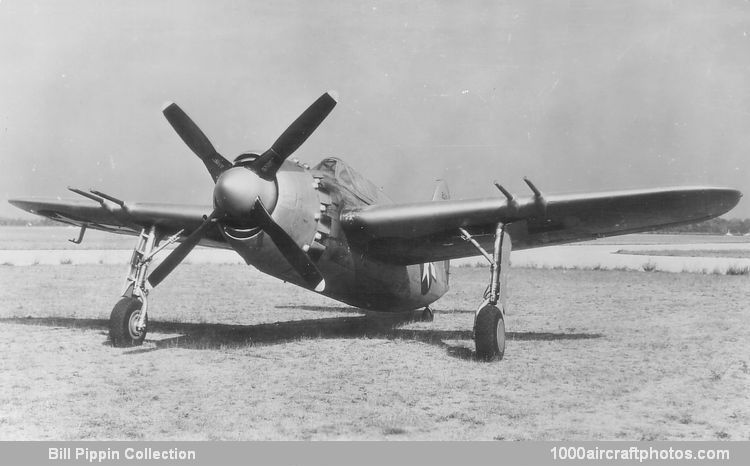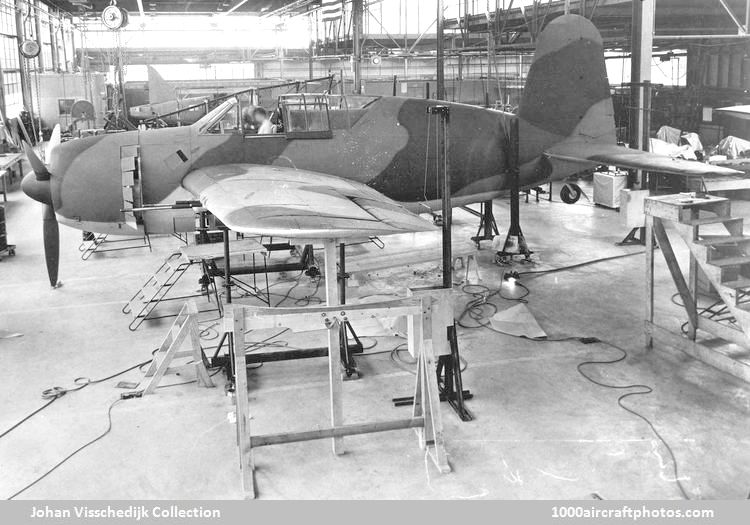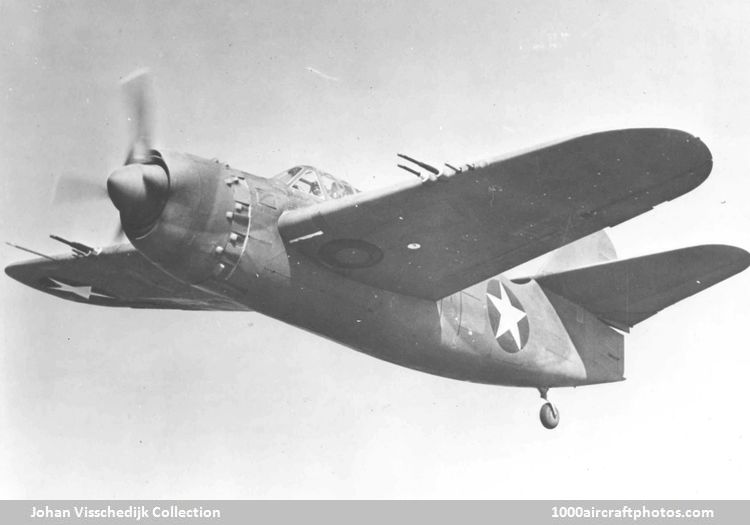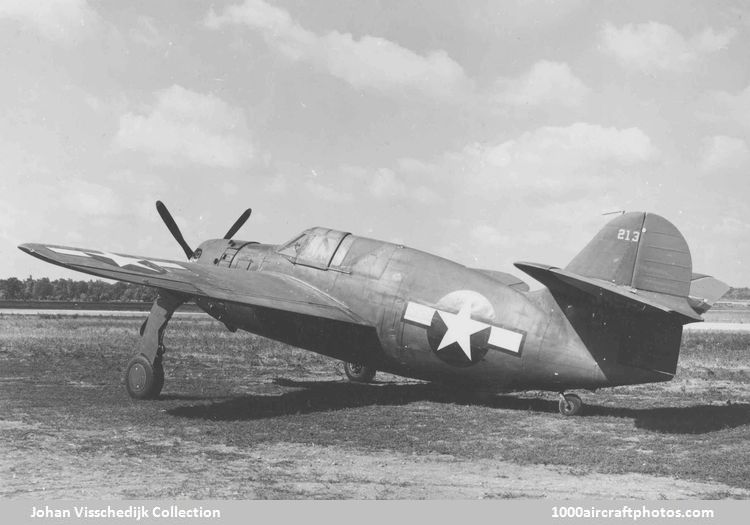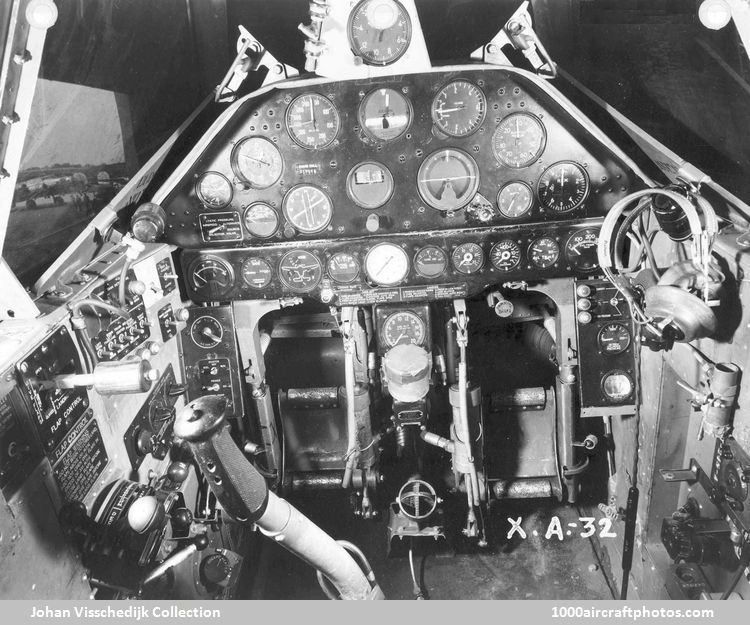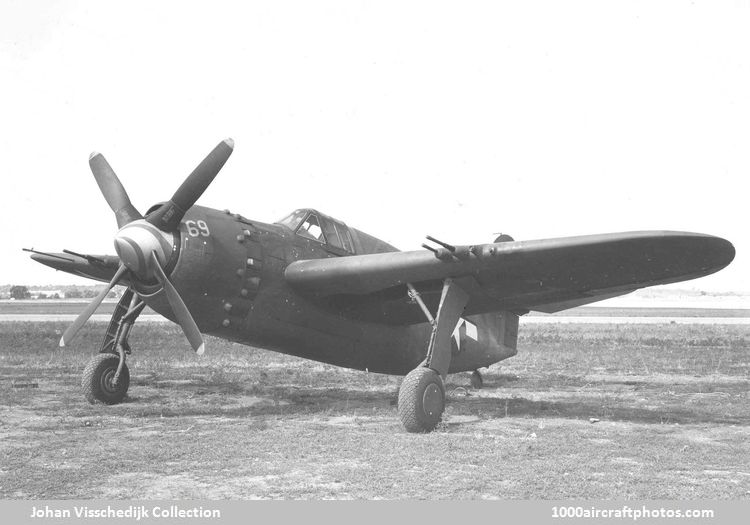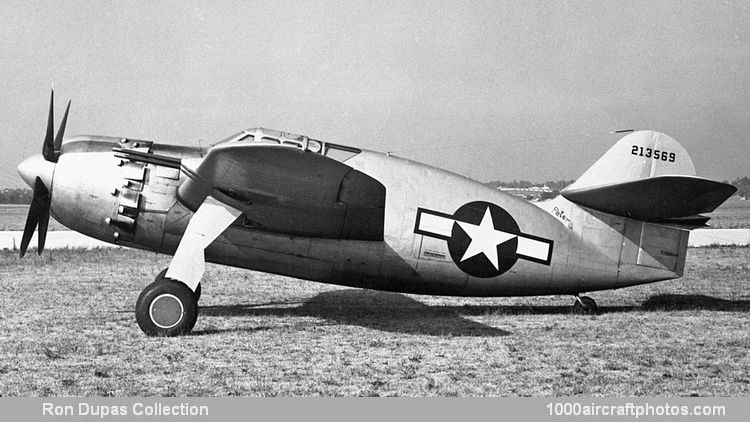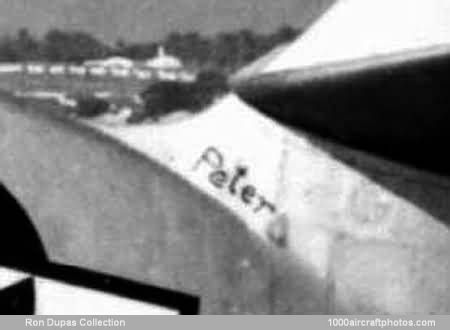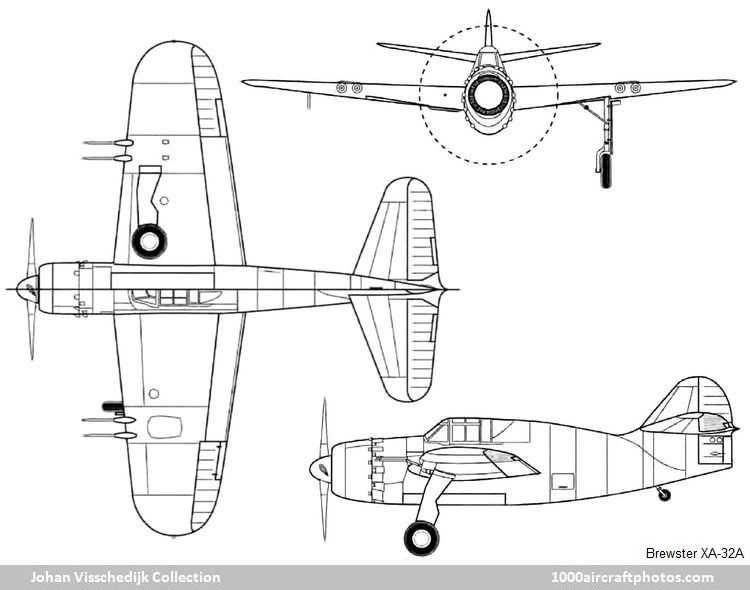07/31/2019. Remarks by
Johan Visschedijk: "The Brewster XA-32 was developed in response to an Air Corps requirement for a large single-engine dive-bomber/ground attack aircraft carrying just the pilot. The success of German dive-bombers during the early Blitzkrieg campaigns in 1939 and 1940 convinced the United States of the need to develop and test dive-bombers of its own.
Mockup (
Johan Visschedijk Collection)
The development of the XA-32 was relatively slow and took almost a year to progress from mockup (spring/summer 1942) to first flight (spring 1943).
(
Johan Visschedijk Collection)
The single-seat aircraft featured eight forward firing 0.50 in (12.7 mm) machine guns (four in each wing) and a 3,000 lb (1,361 kg) maximum bomb load. Each wing had a hardpoint capable of supporting one 1,000 lb (454 kg) bomb, and an internal bomb bay could handle up to 1,000 lb (454 kg) of bombs. The aircraft was powered by a 2,100 hp Pratt & Whitney R-2800-37 Double Wasp radial engine, turning a large four blade propeller with a large spinner. The wing was mounted at mid-fuselage to allow room for the internal bomb bay. A wide stance inward retracting landing gear was also necessary because of the bomb bay, but resulted in good ground handling characteristics.
(
Johan Visschedijk Collection)
The vertical stabilizer was relatively small and the horizontal stabilizer was mounted at the midpoint of the vertical stabilizer. The rudder was split in two parts, one above and one below the vertical stabilizer midpoint. The mockup had a more conventional tail assembly, but this was changed before the prototype was built.
(
Johan Visschedijk Collection)
The XA-32 performed poorly in its flight evaluation. The aircraft was heavy and underpowered. The XA-32 had a cruising speed of less than 200 miles per hour and a small combat range of 500 miles. The North American A-36A Mustang was selected by the Air Corps to fill the ground attack/dive-bomber role and served adequately from mid-1943 into 1944, primarily in North Africa, the Mediterranean and India.
(
Johan Visschedijk Collection)
The XA-32 never progressed past the prototype development phase; however, the second aircraft was used to test the suitability of replacing the wing mounted machine guns with cannons. The eight .50-cal. machine guns originally installed were removed and replaced with four 20mm cannons.
XA-32A (
Ron Dupas Collection) APS No. 3895
Tested as the XA-32A, the cannon armed aircraft had a greater single shot impact due to the larger diameter bullets (0.79 inches versus 0.5 inches); however, the Army Air Force favored the higher rate of fire combined with an increased number of machine guns (i.e. eight .50-cal. machine guns were better than four 20mm cannons). The use of large numbers of machine guns for ground attack aircraft was used very effectively in aircraft like the B-25H, B-26G and A-26B."
07/21/2005. Remarks by Dan Hagedorn,
NASM, in response to our inquiries about the origination of "Peter" on the tail of the XA-32A in the above photo:
"We have received the thread of messages that originated with the National Museum of the USAF display relating to the Brewster XA-32A, and which was forwarded to us via our Public Affairs/Communications Office.
We have a very high-quality original of the image in question which, you may be interested to know, was taken August 15, 1944. However, aside from this, a search of our files and photo resources did not reveal any suggestion of why the name Peter had been rather crudely scrawled across the leading edge of the vertical fin of the aircraft.
We examined a number of test reports and engineering documents, and found no officer or engineer associated with the project identified in any of them with that given name.
Although purely speculation, it may be that the name was applied by the photographer for reasons that are now lost to us."
